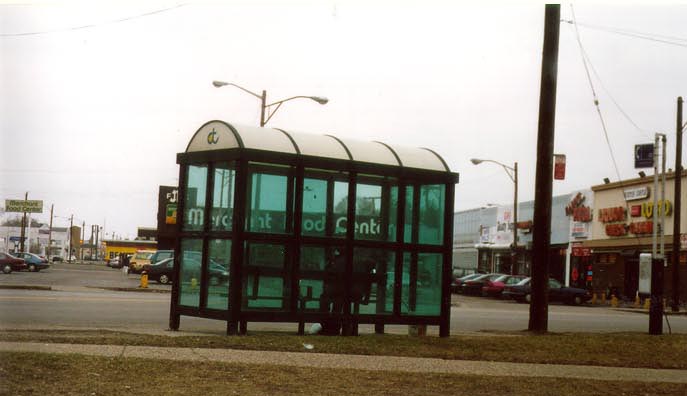Bus Stops and
Bus Users in the City of Detroit
I. Introduction
 According
to Detroit Area Study (DAS), public transportation use has been declining. 2001
DAS data shows that only 8.3 percent of commuters choose bus as their travel
mode whereas 69.1 percents of people are driving alone. Furthermore, 63.1 percent
of respondents answered that they never use bus while frequent users, including
daily users and people taking a bus at least once a week, are about ten percent.
(chart)
According
to Detroit Area Study (DAS), public transportation use has been declining. 2001
DAS data shows that only 8.3 percent of commuters choose bus as their travel
mode whereas 69.1 percents of people are driving alone. Furthermore, 63.1 percent
of respondents answered that they never use bus while frequent users, including
daily users and people taking a bus at least once a week, are about ten percent.
(chart)
7 Mile/ Harned
Previous studies indicate that there are relationships
among environmental factors, psychological factors and transportation use (Bamberg,
Sebastian and Peter Schmidt. "The impact of general attitude on decisions"
Rationality and Society, Thousand Oaks, Feb 1999). GIS data collected in 2000
by SEMCOG enable to observe the condition of bus stops in Detroit, and the bus
stop condition would be one of indicators that represent environmental condition
of public transportation. Also, 2001 DAS shows specific preferences and attitudes
toward transportation among Detroiters. Bus stop condition, Detroiters' inclination
toward transportation and their travel behavior will be examined by using GIS.
II. Methods
First, the overall condition of bus stops was observed.
Five indicators, including stop sign, light, shelter, bench, and sidewalk, are
used to evaluate condition of bus stops. Each bus stop is scored 1 to 5 depending
on existence of five indicators.
Second, characteristics of samples were observed. At this stage, geocoded respondents
and bus stop data were combined.
Third, individual preferences and bus stop conditions were viewed together.
Next page ------>
 According
to Detroit Area Study (DAS), public transportation use has been declining. 2001
DAS data shows that only 8.3 percent of commuters choose bus as their travel
mode whereas 69.1 percents of people are driving alone. Furthermore, 63.1 percent
of respondents answered that they never use bus while frequent users, including
daily users and people taking a bus at least once a week, are about ten percent.
(chart)
According
to Detroit Area Study (DAS), public transportation use has been declining. 2001
DAS data shows that only 8.3 percent of commuters choose bus as their travel
mode whereas 69.1 percents of people are driving alone. Furthermore, 63.1 percent
of respondents answered that they never use bus while frequent users, including
daily users and people taking a bus at least once a week, are about ten percent.
(chart)